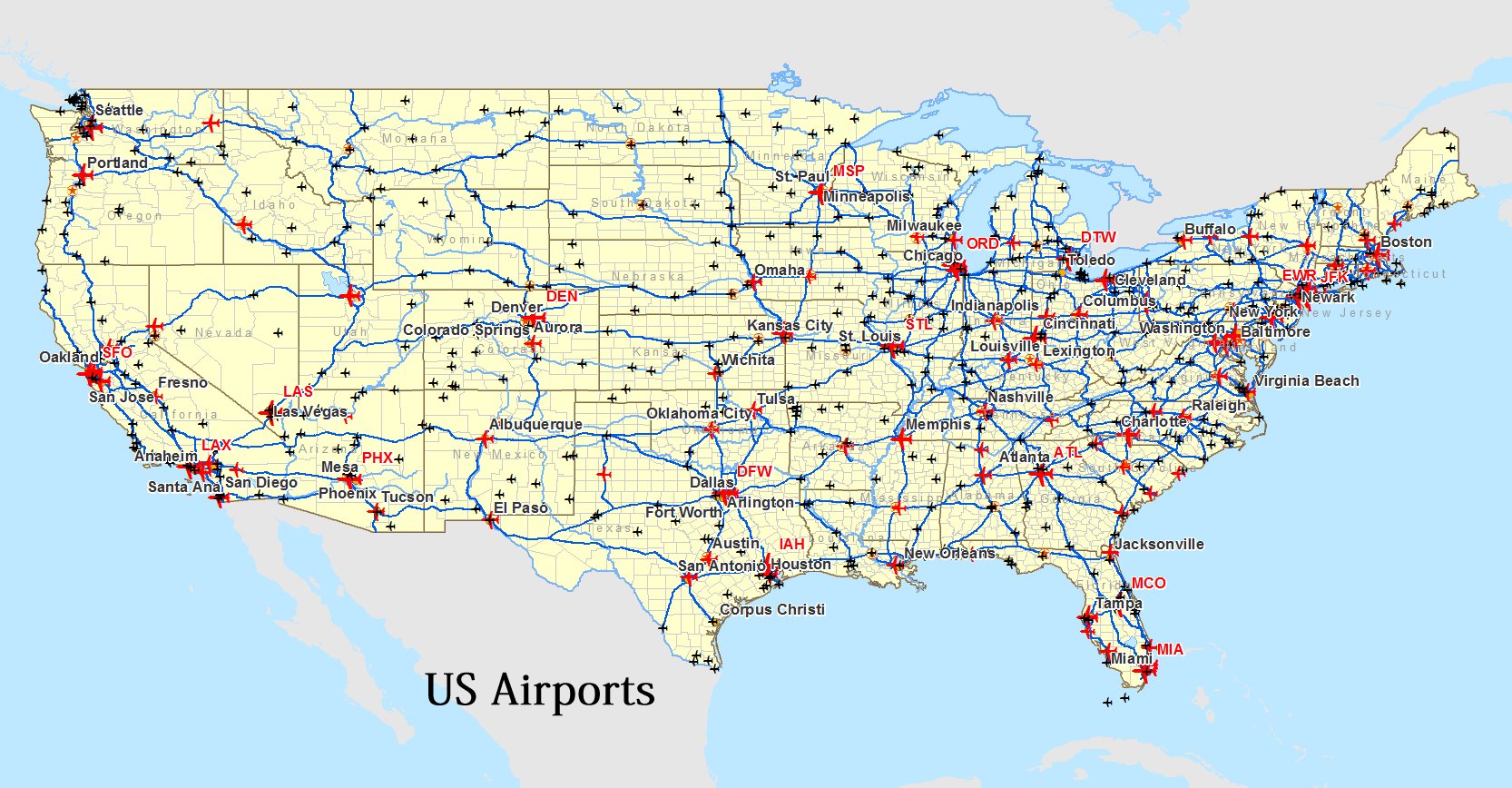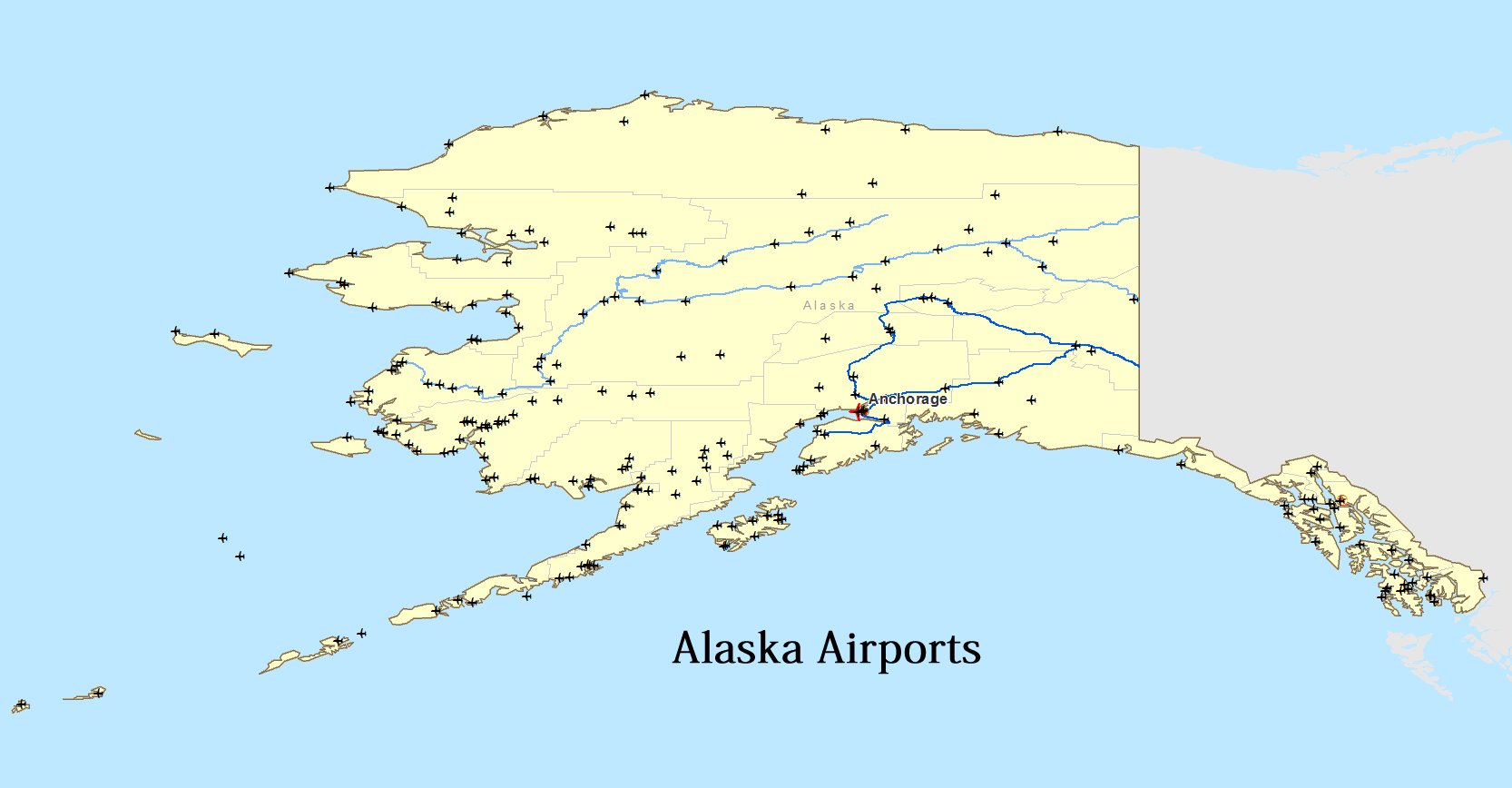 |
| Borders |
|
| |
| The table below provides links to materials which are relevant and applicable across all of the courseware in this program. For ease of access, this table is reproduced on every page of each lesson. |
| |
|
| |
|
|
Airports
Air travel is one of the most important means of travel in the United States and an important mechanism for priority cargo. There are 901 Airports in the US. 84 of those airports have over 1,000,000 passengers/year and 23 have over 10,000,000 passengers/year.
The map below shows the airports in the continental US. The airplane icons represent airports designated as international airports and the dots are regional airports.
The Transportation Security Administration (TSA) is responsible for airport security. Their most visible activity is the baggage and passenger screening at each airport.
The air traffic system is a major security concern because:
- hijacked airplanes can be used as weapons as on 9/11
- the air transport system can disperse persons, materials, diseases, etc. quickly throughout the US.
- airplanes can spread deadly chemical and biological agents
|
| |
US Airports
 |
| |
| The map below shows the airports in Alaska. Because much of the territory of Alaska is undeveloped, air transportation is essential. |
| |
Alaska Airports
 |
| |
| The diagram below shows the layout for a typical airport in this case the Greater Pittsburgh International Airport. This diagram is from a typical pilot's manual. Four runways are shown. Three are in the typical wind direction and the fourth is for when wind direction changes. |
| |
Greater Pittsburgh International Airport
 |
| Exercise: |
Select an international airport. Identify the airlines that serve the airport. Develop a spreadsheet that tallies all of the destination cities and the number of flights for each airline. What are the implications for the distribution of passengers and cargo as a result of this distribution system? |
|
| |
| Resources: |
Transportation Security Administration (TSA) www.tsa.gov
U.S. Department of Transportation
Federal Aviation Administration www.faa.gov
|
|
|
|
|
|
| Copyright © 2011, 2024 Ken Sochats |







